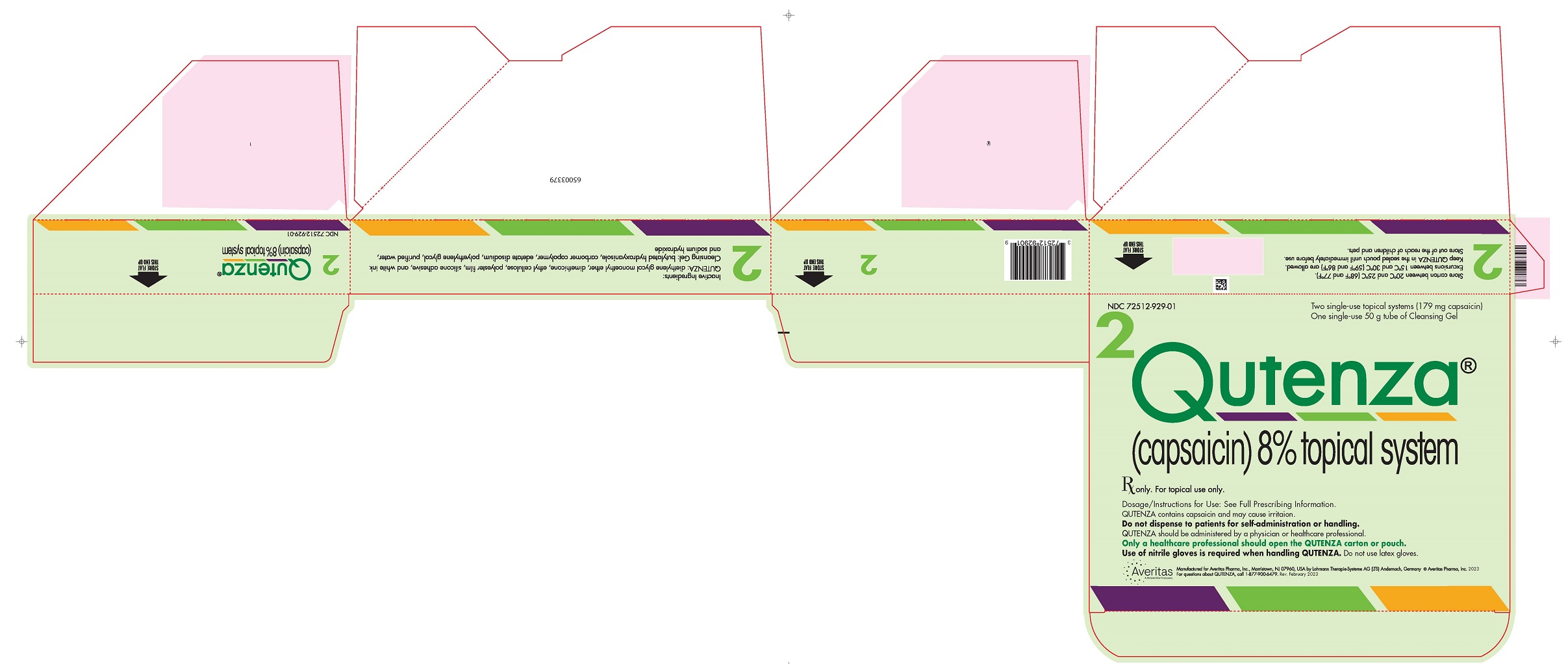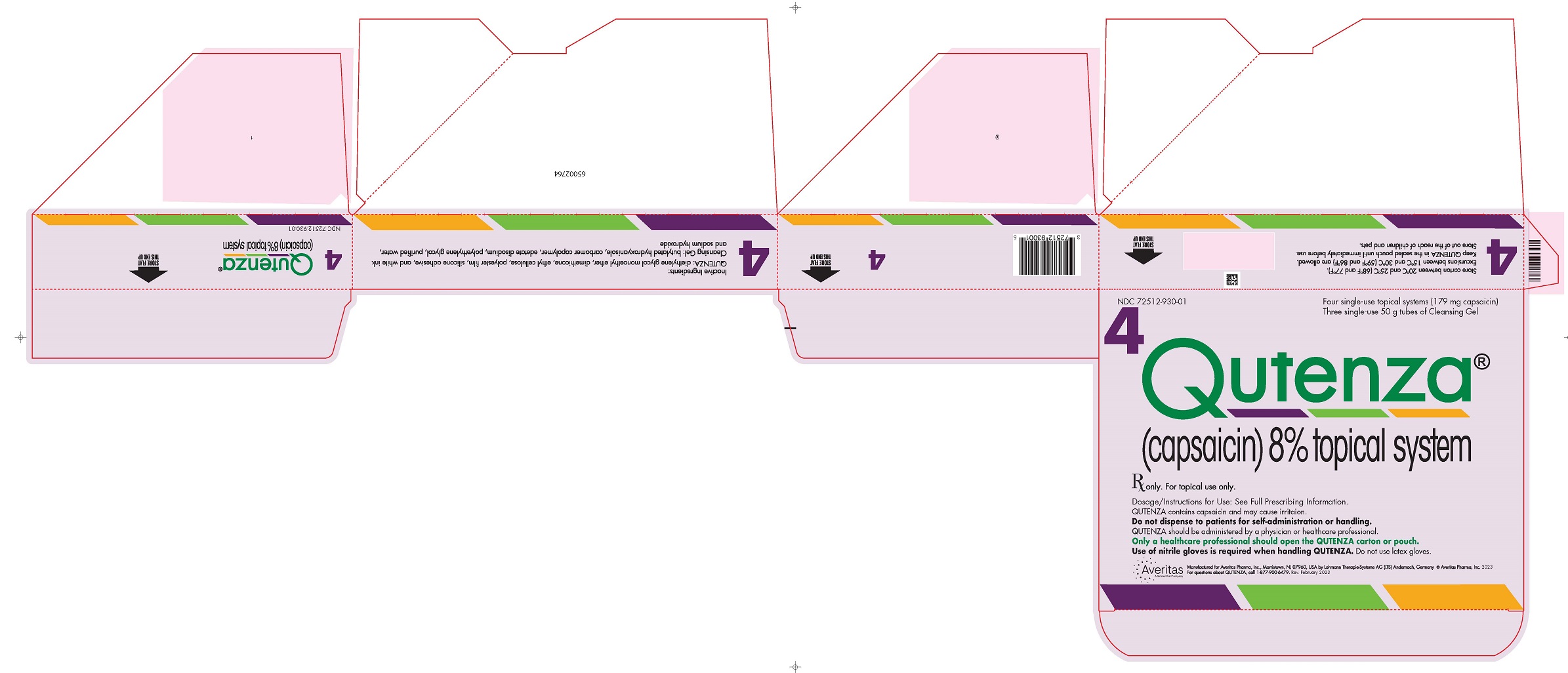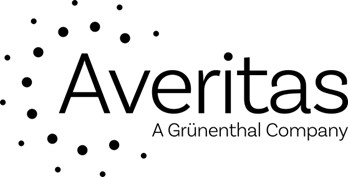Label: QUTENZA- capsaicin kit
-
NDC Code(s):
72512-920-00,
72512-920-01,
72512-920-02,
72512-928-01, view more72512-929-01, 72512-930-01
- Packager: Averitas Pharma Inc
- Category: HUMAN PRESCRIPTION DRUG LABEL
- DEA Schedule: None
- Marketing Status: New Drug Application
Drug Label Information
Updated March 28, 2023
If you are a consumer or patient please visit this version.
- Download DRUG LABEL INFO: PDF XML
- Official Label (Printer Friendly)
-
HIGHLIGHTS OF PRESCRIBING INFORMATION
These highlights do not include all the information needed to use QUTENZA safely and effectively. See full prescribing information for QUTENZA.
QUTENZA ® (capsaicin) topical system
Initial U.S. Approval: 2009RECENT MAJOR CHANGES
INDICATIONS AND USAGE
QUTENZA is a TRPV1 channel agonist indicated for the treatment of neuropathic pain associated with postherpetic neuralgia (PHN) and neuropathic pain associated with diabetic peripheral neuropathy (DPN) of the feet. ( 1)
DOSAGE AND ADMINISTRATION
- Only physicians or health care professionals are to administer QUTENZA. ( 2.1)
- Administer QUTENZA in a well-ventilated treatment area. ( 2.1)
- Wear nitrile (not latex) gloves when handling QUTENZA and when cleaning treatment areas. ( 2.1)
- Use of a face mask and protective glasses is advisable for healthcare professionals. ( 2.1)
- Do not use QUTENZA on broken skin. ( 2.1)
- PHN: Apply up to four topical systems for 60 minutes. ( 2.2)
- DPN: Apply up to four topical systems for 30 minutes on the feet. ( 2.2)
- Repeat every 3 months or as warranted by the return of pain (not more frequently than every three months). ( 2.2)
- See Dosage and Administration, Instructions for Use, for detailed instructions on QUTENZA administration. ( 2.3)
DOSAGE FORMS AND STRENGTHS
- QUTENZA topical system contains 8% capsaicin (640 mcg per cm 2). Each topical systems contains a total of 179 mg of capsaicin. ( 3)
CONTRAINDICATIONS
- None
WARNINGS AND PRECAUTIONS
Severe Irritation with Unintended Capsaicin Exposure: Capsaicin can cause severe irritation of eyes, mucous membranes, respiratory tract, and skin to the healthcare professional, patients, and others. ( 5.1)
− Do not use near eyes or mucous membranes.
− Wear nitrile gloves and avoid touching items or surfaces that the patient may later touch. ( 5.1)
− If irritation of eyes or airway occurs, flush the mucous membranes or eyes with water and provide supportive medical care for shortness of breath. Remove the affected individual (healthcare professional or patient) from the vicinity of QUTENZA. Do not re-expose the affected individual to QUTENZA if respiratory irritation worsens or does not resolve.
− If skin not intended to be treated comes into contact with QUTENZA, apply Cleansing Gel and then wipe off with dry gauze.
− Thoroughly clean all areas and items exposed to QUTENZA and dispose of properly.
Application-Associated Pain: Patients may experience substantial procedural pain and burning upon application of QUTENZA and following removal of QUTENZA. Prepare to treat acute pain during and following the application procedure with local cooling (such as an ice pack) and/or appropriate analgesic medication. ( 5.2)
Increase in Blood Pressure: Transient increases in blood pressure may occur with QUTENZA treatment. Monitor blood pressure during and following the treatment procedure. ( 5.3)
Sensory Function: Reductions in sensory function, which were generally minor and temporary, have been reported following administration of QUTENZA. All patients with sensory deficits should be assessed for signs of sensory deterioration or loss prior to each application of QUTENZA. If sensory loss occurs, treatment should be reconsidered. ( 5.4)ADVERSE REACTIONS
The most common adverse reactions (≥5% and greater than control) in all controlled clinical trials are application site erythema, application site pain, and application site pruritus. ( 6.1)
To report SUSPECTED ADVERSE REACTIONS, contact Averitas Pharma at 1-877-900-6479 or FDA at 1-800-FDA-1088 or www.fda.gov/medwatch.
See 17 for PATIENT COUNSELING INFORMATION.
Revised: 3/2023
-
Table of Contents
FULL PRESCRIBING INFORMATION: CONTENTS*
1 INDICATIONS AND USAGE
2 DOSAGE AND ADMINISTRATION
2.1 Important Dosage and Administration Instructions
2.2 Dosing
2.3 Instructions for Use
3 DOSAGE FORMS AND STRENGTHS
4 CONTRAINDICATIONS
5 WARNINGS AND PRECAUTIONS
5.1 Severe Irritation with Unintended Capsaicin Exposure
5.2 Application-Associated Pain
5.3 Increase in Blood Pressure
5.4 Sensory Function
6 ADVERSE REACTIONS
6.1 Clinical Trials Experience
6.2 Postmarketing Experience
7 DRUG INTERACTIONS
8 USE IN SPECIFIC POPULATIONS
8.1 Pregnancy
8.2 Lactation
8.3 Females and Males of Reproductive Potential
8.4 Pediatric Use
8.5 Geriatric Use
10 OVERDOSAGE
11 DESCRIPTION
12 CLINICAL PHARMACOLOGY
12.1 Mechanism of Action
12.2 Pharmacodynamics
12.3 Pharmacokinetics
13 NONCLINICAL TOXICOLOGY
13.1 Carcinogenesis, Mutagenesis, Impairment of Fertility
14 CLINICAL STUDIES
14.1 Postherpetic Neuralgia
14.2 Neuropathic Pain Associated with Diabetic Peripheral Neuropathy
16 HOW SUPPLIED/STORAGE AND HANDLING
16.1 How Supplied
16.2 Storage
16.3 Handling and Disposal
17 PATIENT COUNSELING INFORMATION
- *
- Sections or subsections omitted from the full prescribing information are not listed.
- 1 INDICATIONS AND USAGE
-
2 DOSAGE AND ADMINISTRATION
2.1 Important Dosage and Administration Instructions
- Do not dispense QUTENZA to patients for self-administration or handling. Only physicians or healthcare professionals are to administer and handle QUTENZA.
- Unintended exposure to capsaicin can cause severe irritation of eyes, mucous membranes, respiratory tract, and skin in healthcare professionals, patients and others [see Warnings and Precautions ( 5.1)] .
- Because unintended exposure to capsaicin can cause severe irritation of eyes, mucous membranes, respiratory tract, and skin, when administering QUTENZA, it is important to follow these procedures:
− Administer QUTENZA in a well-ventilated treatment area.
− Wear only nitrile gloves when handling QUTENZA or any item that makes contact with QUTENZA, and when cleaning capsaicin residue from the skin. Do not use latex gloves as they do not provide adequate protection.
− Use of a face mask and protective glasses is advisable for healthcare professionals.
− Keep QUTENZA in the sealed pouch until immediately before use.
− Use QUTENZA only on dry, intact (unbroken) skin.
− In patients treated for neuropathic pain associated with diabetic peripheral neuropathy, a careful examination of the feet should be undertaken prior to each application of QUTENZA to detect skin lesions related to underlying neuropathy or vascular insufficiency. [see Warnings and Precautions ( 5.4)] .
− During administration, avoid unnecessary contact with any items in the room, including items that the patient may later have contact with, such as horizontal surfaces and bedsheets.
− Aerosolization of capsaicin can occur upon rapid removal of QUTENZA. Therefore, remove QUTENZA gently and slowly by rolling the adhesive side inward [see Warnings and Precautions ( 5.1)] .
− Immediately after use, clean all areas that had contact with QUTENZA and properly dispose of QUTENZA, associated packaging, Cleansing Gel, gloves, and other treatment materials in accordance with local biomedical waste procedures.
− If QUTENZA is cut, ensure unused pieces are properly disposed of.2.2 Dosing
- The recommended dose of QUTENZA for neuropathic pain associated with postherpetic neuralgia is a single, 60-minute application of up to four topical systemstopical systems.
- The recommended dose of QUTENZA for neuropathic pain associated with diabetic peripheral neuropathy is a single, 30-minute application on the feet of up to four patches.
Treatment with QUTENZA may be repeated every three months or as warranted by the return of pain (not more frequently than every three months).
2.3 Instructions for Use
USE IN NEUROPATHIC PAIN ASSOCIATED WITH POSTHERPETIC NEURALGIA
(60-MINUTE APPLICATION TIME)
Prepare
- Administer QUTENZA in a well-ventilated treatment area.
- Put on nitrile (not latex) gloves. Use of a face mask and protective glasses is advisable for healthcare professionals.
- Inspect the pouch. Do not use if the pouch has been torn or damaged.
- The treatment area (painful area including areas of hypersensitivity and allodynia) must be identified by a physician or healthcare professional and marked on the skin.

- If necessary, clip hair (do not shave) in and around the identified treatment area to promote QUTENZA adherence.
- QUTENZA can be cut to match the size and shape of the treatment area. Gently wash the treatment area with mild soap and water, and dry thoroughly.
- The treatment area may be pretreated with a topical anesthetic to potentially reduce discomfort associated with the application of QUTENZA.
- Apply topical anesthetic to the entire treatment area and surrounding 1 to 2 cm, and keep the local anesthetic in place until the skin is anesthetized prior to the application of QUTENZA.
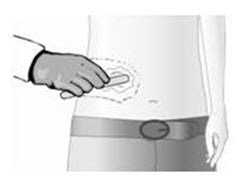
- Remove the topical anesthetic with a dry wipe. Gently wash the treatment area with mild soap and water, and dry thoroughly.
- Tear open the pouch along the three dashed lines and remove QUTENZA.
- Inspect QUTENZA and identify the outer surface backing layer with the printing on one side and the capsaicin-containing adhesive on the other side. The adhesive side of QUTENZA is covered by a clear, unprinted, diagonally cut release liner.
- Cut QUTENZA before removing the protective release liner. Ensure that unused pieces do not make contact with other objects and are disposed of appropriately.
- The diagonal cut in the release liner is to aid in its removal. Peel a small section of the release liner back and place the adhesive side of QUTENZA on the treatment area.
- While you slowly peel back the release liner from under the QUTENZA with one hand, use your other hand to smooth QUTENZA down onto the skin.
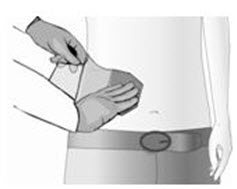
- Once QUTENZA is applied, leave in place for 60 minutes (PHN).
- To ensure QUTENZA maintains contact with the treatment area, a dressing, such as rolled gauze, may be used. Remove the nitrile gloves after the application.
- Instruct the patient not to touch QUTENZA or the treatment area.
- Put on nitrile (not latex) gloves. Remove QUTENZA by gently and slowly rolling inward.

Cleanse
- After removal of QUTENZA, generously apply Cleansing Gel to the treatment area and leave on for at least one minute. Remove Cleansing Gel with a dry wipe and gently wash the area with mild soap and water. Dry thoroughly.
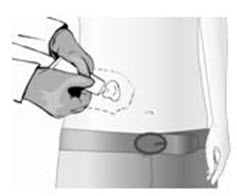
- Dispose of all treatment materials as described [see Dosage and Administration ( 2.1)] .
- Inform the patient that the treated area may be sensitive for a few days to heat (e.g., hot showers/baths, direct sunlight, vigorous exercise).
USE IN NEUROPATHIC PAIN ASSOCIATED WITH DIABETIC PERIPHERAL NEUROPATHY
(30-MINUTE APPLICATION TIME ON THE FEET)
Prepare
- Administer QUTENZA in a well-ventilated treatment area.
- Put on nitrile (not latex) gloves. Use of a face mask and protective glasses is advisable for healthcare professionals.
- Inspect the pouch. Do not use if the pouch has been torn or damaged.
- The treatment area (painful area including areas of hypersensitivity and allodynia) must be identified by a physician or healthcare professional and marked on the skin.
- Examine the feet prior to application of QUTENZA to detect skin lesions related to underlying neuropathy or vascular insufficiency.
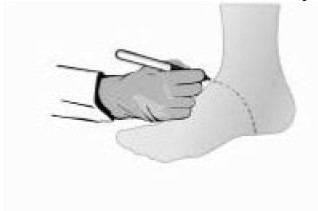
- If necessary, clip hair (do not shave) in and around the identified treatment area to promote QUTENZA adherence.
- QUTENZA can be cut to match the size and shape of the treatment area. Gently wash the treatment area with mild soap and water, and dry thoroughly.
- The treatment area may be pretreated with a topical anesthetic to potentially reduce discomfort associated with the application of QUTENZA.
- Apply topical anesthetic to the entire treatment area and surrounding 1 to 2 cm, and keep the local anesthetic in place until the skin is anesthetized prior to the application of QUTENZA.
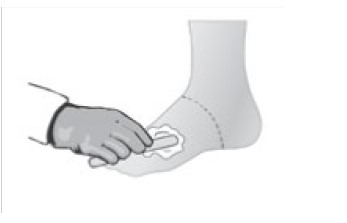
- Remove the topical anesthetic with a dry wipe. Gently wash the treatment area with mild soap and water, and dry thoroughly.
- Tear open the pouch along the three dashed lines and remove QUTENZA.
- Inspect QUTENZA and identify the outer surface backing layer with the printing on one side and the capsaicin-containing adhesive on the other side. The adhesive side of QUTENZA is covered by a clear, unprinted, diagonally cut release liner.
- Cut QUTENZA before removing the protective release liner. Ensure that unused pieces do not make contact with other objects and are disposed of appropriately.
- The diagonal cut in the release liner is to aid in its removal. Peel a small section of the release liner back and place the adhesive side of QUTENZA on the treatment area.
- While you slowly peel back the release liner from under the QUTENZA with one hand, use your other hand to smooth QUTENZA down onto the skin.
- QUTENZA can be wrapped around the dorsal, lateral and plantar surfaces of each foot to completely cover the treatment area.
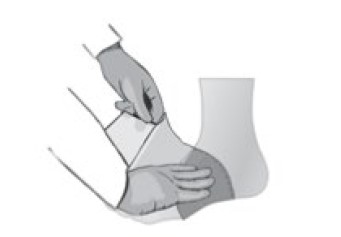
- Once QUTENZA is applied, leave in place for 30 minutes on the feet (DPN).
- To ensure QUTENZA maintains contact with the treatment area, a dressing, such as rolled gauze, may be used. Remove the nitrile gloves after the application.
- Instruct the patient not to touch QUTENZA or the treatment area.
- Put on nitrile (not latex) gloves. Remove QUTENZA by gently and slowly rolling inward.
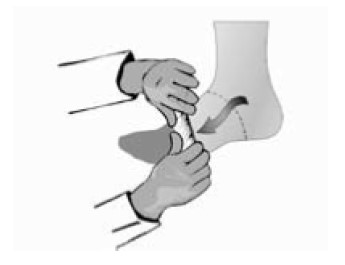
Cleanse
- After removal of QUTENZA, generously apply Cleansing Gel to the treatment area and leave on for at least one minute. Remove Cleansing Gel with a dry wipe and gently wash the area with mild soap and water. Dry thoroughly.

- Dispose of all treatment materials as described [see Dosage and Administration ( 2.1)] .
- Inform the patient that the treated area may be sensitive for a few days to heat (e.g., hot showers/baths, direct sunlight, vigorous exercise).
-
3 DOSAGE FORMS AND STRENGTHS
QUTENZA topical system contains 8% capsaicin (640 mcg per cm 2). Each topical system contains a total of 179 mg of capsaicin. Each topical system is 14 cm x 20 cm (280 cm 2) and consists of an adhesive side containing the active substance and an outer surface backing layer. The adhesive side is covered with a removable, clear, unprinted, diagonally cut, release liner. The outer surface of the backing layer is imprinted with “capsaicin 8%”.
- 4 CONTRAINDICATIONS
-
5 WARNINGS AND PRECAUTIONS
5.1 Severe Irritation with Unintended Capsaicin Exposure
Unintended exposure to capsaicin can cause severe irritation of eyes, mucous membranes, respiratory tract, and skin in healthcare professionals, patients, and others. Ensure that the recommended procedures and protective measures are used when administering QUTENZA [see Dosage and Administration ( 2.1)].
Eye and Mucous Membrane Exposure
• For healthcare professionals:
○ Wear nitrile gloves when administering QUTENZA and avoid unnecessary contact with items in the room, including items that the patient may later have contact with, such as horizontal surfaces and bedsheets.
○ Use of a face mask and protective glasses is advisable.
• Do not apply QUTENZA to the patient’s face, eyes, mouth, nose, or scalp to avoid risk of exposure to eyes or mucous membranes.
• Accidental exposure to the eyes and mucous membranes can occur from touching QUTENZA or items exposed to capsaicin and then touching the eyes and mucous membranes.
• If irritation of eyes or mucous membranes occurs, flush eyes and mucous membranes with cool water. Remove the affected individual (healthcare professional or patient) from the vicinity of QUTENZA.
Respiratory Tract Exposure
- Aerosolization of capsaicin can occur upon rapid removal of QUTENZA. Therefore, remove QUTENZA gently and slowly by rolling the adhesive side inward [see Dosage and Administration ( 2.1, 2.3)] .
- Inhalation of airborne capsaicin can result in coughing or sneezing. Administer QUTENZA in a well-ventilated treatment area. Provide supportive medical care if shortness of breath develops. If irritation of airways occurs, remove the affected individual (healthcare professional or patient) from the vicinity of QUTENZA. If respiratory irritation worsens or does not resolve, do not re-expose the affected healthcare professional or patient to QUTENZA [see Adverse Reactions ( 6.2)].
Skin Exposure
- If skin not intended to be treated is exposed to QUTENZA, apply Cleansing Gel for one minute and wipe off with dry gauze. After the Cleansing Gel has been wiped off, wash the area with soap and water.
Thoroughly clean all areas that had contact with QUTENZA and properly dispose of QUTENZA, associated packaging, Cleansing Gel, gloves, and other treatment materials in accordance with local biomedical waste procedures [see Dosage and Administration ( 2.1, 2.3)] .
5.2 Application-Associated Pain
Even following use of a local anesthetic prior to administration of QUTENZA, patients may experience substantial procedural pain and burning upon application of QUTENZA and following removal of QUTENZA. Prepare to treat acute pain during and following the application procedure with local cooling (such as an ice pack) and/or appropriate analgesic medication.
5.3 Increase in Blood Pressure
In clinical trials, transient increases in blood pressure occurred during or shortly after exposure to QUTENZA. The changes averaged less than 10 mm Hg, although some patients had greater increases and these changes lasted for approximately two hours after QUTENZA removal. Increases in blood pressure were unrelated to the pretreatment blood pressure but were related to treatment-related increases in pain. Monitor blood pressure periodically during and following the treatment procedure and provide adequate support for treatment-related pain.
Patients with unstable or poorly controlled hypertension, or a recent history of cardiovascular or cerebrovascular events, may be at an increased risk of adverse cardiovascular effects. Consider these factors prior to initiating QUTENZA treatment.5.4 Sensory Function
Reductions in sensory function have been reported following administration of QUTENZA. Decreases in sensory functions are generally minor and temporary (including to thermal and other harmful stimuli). All patients with pre-existing sensory deficits should be clinically assessed for signs of sensory deterioration or loss prior to each application of QUTENZA. If sensory deterioration or loss is detected or pre-existing sensory deficit worsens, continued use of QUTENZA treatment should be reconsidered.
-
6 ADVERSE REACTIONS
The following serious adverse reactions are discussed elsewhere in the labeling:
- Severe Irritation Due to Accidental Exposure of Eyes, Skin, Respiratory Tract, and Mucous Membranes [see Warning and Precautions ( 5.1)]
- Application-Associated Pain [see Warnings and Precautions ( 5.2)]
- Increase in Blood Pressure [see Warnings and Precautions ( 5.3)]
- Sensory Function Reduction [see Warning and Precautions ( 5.4)]
6.1 Clinical Trials Experience
Because clinical trials are conducted under widely varying conditions, adverse reaction rates observed in the clinical trials of a drug cannot be directly compared to rates in the clinical trials of other drugs and may not reflect the rates observed in clinical practice.
Across all controlled and uncontrolled clinical trials, 2848 patients have received QUTENZA. A total of 924 patients received more than one treatment application and 732 patients were followed for 48 weeks or longer. A total of 590 DPN patients and 1112 PHN patients have received QUTENZA across all controlled and uncontrolled clinical trials.
Among patients treated with QUTENZA, 1% discontinued prematurely due to an adverse event.
Most Common Adverse Reactions in all Controlled Clinical Trials
In all controlled clinical trials, adverse reactions occurring in ≥5% of patients in the QUTENZA group and at an incidence at least 1% greater than in the control group were application site erythema, application site pain, and application site pruritus.
The majority of application site reactions were transient and self-limited. Transient increases in pain were commonly observed on the day of treatment in patients treated with QUTENZA. Pain increases occurring during QUTENZA application usually began to resolve after QUTENZA removal. On average, pain scores returned to baseline by the end of the treatment day and then remained at or below baseline levels. A majority of QUTENZA-treated patients in clinical trials had adverse reactions with a maximum intensity of "mild" or "moderate".
Postherpetic Neuralgia (PHN)
Table 1 summarizes all adverse reactions, regardless of causality, occurring in >1% of patients with PHN in the QUTENZA group for which the incidence was at least 1% greater than in the control group.
TABLE 1: Adverse Reaction Incidence (%) in Controlled Double-blind Trials in Postherpetic Neuralgia (Events in >1% of QUTENZA-treated Patients and at Least 1% Greater in the QUTENZA Group than in the Control Group) Body System
Preferred TermQUTENZA
60 minutes
(N=622)
%Control
60 minutes
(N=495)
%General Disorders and Administration Site Conditions
Application site erythema
63
54
Application site pain
42
21
Application site pruritus
6
4
Application site papules
6
3
Application site edema
4
1
Application site swelling
2
1
Application site dryness
2
1
Infections and Infestations
Nasopharyngitis
4
2
Bronchitis
2
1
Sinusitis
3
1
Gastrointestinal Disorders
Nausea
5
2
Vomiting
3
1
Skin and Subcutaneous Tissue Disorder
Pruritus
2
< 1
Vascular Disorders
Hypertension
2
1
Less common adverse reactions (<1%) with QUTENZA observed during PHN clinical trials included: palpitations, tachycardia, eye pruritus, application site reactions (such as urticaria, paresthesia, dermatitis, hyperesthesia).
Neuropathic Pain Associated with Diabetic Peripheral Neuropathy (DPN)
Table 2 summarizes all adverse reactions, regardless of causality, occurring in >1% of patients with DPN in the QUTENZA group for which the incidence was at least 1% greater than in the control group.
TABLE 2: Adverse Reaction Incidence (%) in Double-blind Controlled Trials in Neuropathic Pain Associated with Diabetic Peripheral Neuropathy (Events in >1% of QUTENZA-treated Patients and at Least 1% Greater in the QUTENZA Group than in the Control Group) Body System
Preferred Term
QUTENZA
30 minutes
(N=186)
%
Control
30 minutes
(N=183)
%
General Disorders and Administration Site Conditions Application site reactions Burning sensation 14 3 Application site pain 10 2 Erythema 2 0 Injury, Poisoning and Procedural Complications Excoriation 2 0 Musculoskeletal and Connective Tissue Disorders Pain in extremity 11 6 Nervous System Disorders Headache 3 2 Respiratory, Thoracic and Mediastinal Disorders Upper respiratory symptoms Upper respiratory tract infection 4 < 1 Cough 2 < 1 Vascular Disorders Hypertension 2 < 1 Less common adverse reactions (<1%) with QUTENZA observed during DPN clinical trials included: dizziness, dysesthesia, blister.
6.2 Postmarketing Experience
Because adverse reactions are reported voluntarily from a population of uncertain size, it is not always possible to reliably estimate their frequency or establish a causal relationship to drug exposure.
The following adverse reactions have been identified during post approval use of QUTENZA: second- and third-degree burns and scarring; accidental exposure (including eye pain, cough, eye and throat irritation). -
7 DRUG INTERACTIONS
No clinical drug interaction studies have been performed.
Data from in vitro cytochrome P450 inhibition and induction studies show that capsaicin does not inhibit or induce liver cytochrome P450 enzymes at concentrations which far exceed those measured in blood samples. Therefore, interactions with systemic medicinal products are unlikely.
-
8 USE IN SPECIFIC POPULATIONS
8.1 Pregnancy
Risk Summary
Capsaicin is negligibly absorbed systemically following topical administration of QUTENZA, and maternal use is not expected to result in the fetal exposure to QUTENZA. In animal reproductive studies, no evidence of malformations were observed when capsaicin was administered daily by the topical route to pregnant rats and rabbits during the period of organogenesis at doses of up to 11- and 37-times, respectively, the maximum recommended human dose (MRHD) of QUTENZA at 716 mg capsaicin per day (4 topical systems containing 179 mg/topical systems). In a peri- and postnatal development study, no adverse effects were observed when capsaicin was administered daily by the topical route to rats during implantation to weaning at doses of up to 11-times the MRHD (see Data).
The estimated background risk of major birth defects and miscarriage for the indicated population is unknown. All pregnancies have a background risk of birth defect, loss, or other adverse outcomes. In the U.S. general population, the estimated background risk of major birth defects and miscarriage in clinically recognized pregnancies is 2% to 4% and 15% to 20%, respectively.
Data
Animal DataThere was no evidence of fetal malformations in embryofetal developmental toxicological studies conducted in pregnant rats and rabbits in which QUTENZA (rats) or capsaicin liquid (rabbits) were applied once daily for a 3-hour duration during the period of fetal organogenesis at doses up to 11-times (rat, 32 mg QUTENZA /day) and 37-times (rabbit, 260 mg capsaicin/day) the MRHD based on a C max exposure comparison.
In a peri- and postnatal reproduction toxicology study, pregnant female rats were treated with QUTENZA at doses up to 32 mg QUTENZA/rat/day applied once daily for a 3-hour duration during gestation and lactation (from Gestation Day 7 through Lactation Day 20). Analyses of milk samples on Day 14 of the lactation period demonstrated measurable levels of capsaicin in the dam's milk at all dose levels. There were no effects on survival, growth, learning and memory tests (passive avoidance and water maze), sexual maturation, mating, pregnancy, and fetal development in the offspring of mothers treated with capsaicin up to 32 mg QUTENZA /rat/day (11-times the MRHD based on C max exposure).
8.2 Lactation
Risk Summary
Capsaicin is negligibly absorbed systemically by the mother following topical administration of QUTENZA, and breastfeeding is not expected to result in exposure of the infant to QUTENZA [see Clinical Pharmacology ( 12.3)] . There are no data on the effects of capsaicin on milk production. To minimize potential direct exposure of QUTENZA to the breastfed infant, avoid applying QUTENZA directly to the nipple and areola.The developmental and health benefits of breastfeeding should be considered along with the mother’s clinical need for QUTENZA and any potential adverse effects on the breastfed infant from QUTENZA or from the underlying maternal condition.
8.3 Females and Males of Reproductive Potential
Infertility
In a fertility and reproductive toxicology study, administration of QUTENZA at 13-times the MRHD to male rats for 3 hours/day for 49 days resulted in a statistically significant reduction in the number and percent of motile sperm; however, these reductions did not adversely affect fertility [see Nonclinical Toxicology ( 13.1)] . As this animal model has a large excess of sperm-generating capacity relative to the threshold necessary for fertilization, the lack of an effect on fertility in this species is of unknown clinical significance for males of reproductive potential treated with the MRHD.8.4 Pediatric Use
The safety and effectiveness of QUTENZA in patients younger than 18 years of age have not been studied.
8.5 Geriatric Use
In controlled clinical trials of QUTENZA in neuropathic pain associated with postherpetic neuralgia, 75% of patients were 65 years and older and 43% of patients were 75 years and older. The safety and effectiveness were similar in geriatric patients and younger patients. No dose adjustments are required in geriatric patients.
-
10 OVERDOSAGE
There is no clinical experience with QUTENZA overdose in humans.
There is no specific antidote for overdose with capsaicin. In case of suspected overdose, remove QUTENZA gently, apply Cleansing Gel for one minute, wipe off with dry gauze, and gently wash the area with soap and water. Use supportive measures and treat symptoms as clinically warranted.
-
11 DESCRIPTION
QUTENZA (capsaicin) 8% topical system contains capsaicin in a localized dermal delivery system. The capsaicin in QUTENZA is a synthetic equivalent of the naturally occurring compound found in chili peppers. Capsaicin is soluble in alcohol, acetone, and ethyl acetate and very slightly soluble in water.
QUTENZA is a single-use topical system stored in a foil pouch. Each QUTENZA is 14 cm x 20 cm (280 cm 2) and consists of a polyester backing film coated with a drug-containing silicone adhesive mixture and covered with a removable polyester release liner.
The backing film is imprinted with “capsaicin 8%”. Each QUTENZA contains a total of 179 mg of capsaicin (8% in adhesive, 80 mg per gram of adhesive) or 640 micrograms (mcg) of capsaicin per square cm of topical system.
The empirical formula is C 18H 27NO 3, with a molecular weight of 305.42. The chemical compound capsaicin [(E)-8-methyl-N-vanillyl-6-nonenamide] is an activating ligand for transient receptor potential vanilloid 1 receptor (TRPV1) and it has the following structure:
FIGURE 1: Structural Formula of Capsaicin

QUTENZA contains the following inactive ingredients: diethylene glycol monoethyl ether, dimethicone, ethyl cellulose, polyester film, silicone adhesive, and white ink.
QUTENZA is supplied with a Cleansing Gel which is used to remove residual capsaicin from the skin after treatment. Cleansing Gel consists of the following ingredients: butylated hydroxyanisole, carbomer copolymer, edetate disodium, polyethylene glycol, purified water, and sodium hydroxide.
-
12 CLINICAL PHARMACOLOGY
12.1 Mechanism of Action
Capsaicin is an agonist for the transient receptor potential vanilloid 1 receptor (TRPV1), which is an ion channel-receptor complex expressed on nociceptive nerve fibers in the skin. Topical administration of capsaicin causes an initial enhanced stimulation of the TRPV1-expressing cutaneous nociceptors that may be associated with painful sensations. This is followed by pain relief thought to be mediated by a reduction in TRPV1-expressing nociceptive nerve endings [see Clinical Pharmacology ( 12.2)] . Over the course of several months, there may be a gradual re-emergence of painful neuropathy thought to be due to TRPV1 nerve fiber reinnervation of the treated area.
12.2 Pharmacodynamics
Two studies evaluated the pharmacodynamic effects of QUTENZA on sensory function and epidermal nerve fiber (ENF) density in healthy volunteers. Consistent with the known pharmacodynamic effects of capsaicin on TRPV1-expressing nociceptive nerve endings, reduced ENF density and minor changes in cutaneous nociceptive function (heat detection and sharp sensation) were noted one week after exposure to QUTENZA. ENF density reduction and sensory changes were fully reversible.
12.3 Pharmacokinetics
Pharmacokinetic data in humans showed transient, low (< 5 ng/mL) systemic exposure to capsaicin in about one-third of PHN patients following 60-minute applications of QUTENZA. The highest plasma concentration of capsaicin detected was 4.6 ng/mL and occurred immediately after QUTENZA removal. Most quantifiable levels were observed at the time of QUTENZA removal and were below the limit of quantitation 3 to 6 hours after QUTENZA removal. No detectable levels of metabolites were observed in any subject.
-
13 NONCLINICAL TOXICOLOGY
13.1 Carcinogenesis, Mutagenesis, Impairment of Fertility
Carcinogenesis
Adequate carcinogenicity studies have not been conducted with QUTENZA or capsaicin.
Mutagenesis
Capsaicin was not mutagenic in the Ames, mouse micronucleus, and chromosomal aberration in human peripheral blood lymphocytes assays. As with other catechol-containing compounds (e.g., dopamine), capsaicin showed a weak mutagenic response in the mouse lymphoma assay.
Impairment of Fertility
A fertility and reproductive toxicology study was conducted in rats with exposure to QUTENZA daily for 3 hours/day beginning 28 days before cohabitation, through cohabitation, and continuing through the day before sacrifice (approximately 49 days of treatment). The results revealed a statistically significant reduction in the number and percent of motile sperm. Sperm motility obtained from the vas deferens was reduced in all capsaicin treatment groups (16, 24 and 32 mg QUTENZA/rat/day). Though a “no effect” level was not determined, dose levels used in the study correspond to a 13- to 28-fold exposure margin over the mean C max associated with the MRHD. Sperm counts were reduced in the vas deferens or cauda epididymis in the 24 and 32 mg QUTENZA/rat/day dose groups (79% and 69%, respectively) compared to the placebo topical system-treated control group; however, these reductions did not adversely affect fertility. As this animal model has a large excess of sperm-generating capacity relative to the threshold necessary for fertilization, the lack of an effect on fertility in this species is of unknown significance for human risk assessment.
-
14 CLINICAL STUDIES
14.1 Postherpetic Neuralgia
The efficacy of QUTENZA was established in two 12-week, double-blind, randomized, dose-controlled, multicenter clinical trials. These studies enrolled patients with postherpetic neuralgia (PHN) persisting for at least 6 months following healing of herpes zoster rash and a baseline score of 3-9 on an 11-point Numerical Pain Rating Scale (NPRS) ranging from 0 (no pain) to 10 (worst possible pain). QUTENZA and a control topical system were each applied as a single, 60-minute application. The control used in these studies looked similar to QUTENZA but contained a low concentration of the active ingredient, capsaicin (3.2 mcg/cm 2, 0.04% w/w) to retain blinding regarding the known application site reactions of capsaicin (such as burning and erythema). The baseline mean pain score across the 2 studies was approximately 6.0. Patients who entered the study on stable doses of pain-control medications were required to keep dosing stable throughout the duration of the study. Approximately half of the patients were taking concomitant medications, including anticonvulsants, non-SSRI antidepressants, or opioids for their PHN at study entry. Prior to application, a topical anesthetic was applied to the treatment area for 60 minutes. Patients were permitted to use local cooling and additional analgesic medications for treatment-related discomfort as needed through Day 5. Patients recorded their pain daily in a diary.
PHN Study 1: In this 12-week study, the QUTENZA group demonstrated a greater reduction in pain compared to the control group during the primary assessment at Week 8. The percent change in average pain from baseline to Week 8 was -18% (±2%) for the low-dose control and -29% (±2%) for QUTENZA.
For various degrees of improvement in pain from baseline to study endpoint, Figure 2 shows the fraction of patients achieving that degree of improvement. The figure is cumulative, so that patients whose change from baseline is, for example, 50%, are also included at every level of improvement below 50%. Patients who did not complete the study through Week 12 or who showed no improvement at Week 12 were assigned 0% improvement. Some patients experienced a decrease in pain as early as Week 1, which persisted throughout the study. The proportion of patients experiencing ≥30% reduction in pain intensity from baseline for each week through Week 12 is shown in Figure 3.
FIGURE 2: Patients Achieving Various Percentages of Reduction in Pain Intensity at Week 12 – Study 1

FIGURE 3: Weekly Proportion of Patients Achieving ≥30% Pain Intensity Reduction – Study 1*

PHN Study 2: In this 12-week study, the QUTENZA group demonstrated a greater reduction in pain compared to the control group during the primary assessment at Week 8. The percent change in average pain from baseline to Week 8 was -26% (±2%) for the low-dose control and -33% (±2%) for QUTENZA.
For various degrees of improvement in pain from baseline to study endpoint, Figure 4 shows the fraction of patients achieving that degree of improvement. The figure is cumulative, so that patients whose change from baseline is, for example, 50%, are also included at every level of improvement below 50%. Patients who did not complete the study through Week 12 or who showed no improvement at Week 12 were assigned 0% improvement. Some patients experienced a decrease in pain as early as Week 1, which persisted throughout the study. The proportion of patients achieving ≥30% reduction in pain intensity from baseline for each week through Week 12 is shown in Figure 5.
FIGURE 4: Patients Achieving Various Percentages of Reduction in Pain Intensity at Week 12 – Study 2

FIGURE 5: Weekly Proportion of Patients Achieving ≥ 30% Pain Intensity Reduction – Study 2*
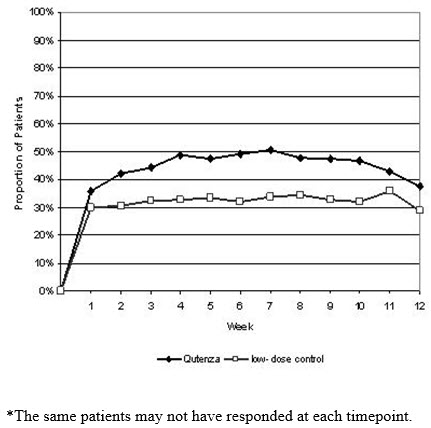
14.2 Neuropathic Pain Associated with Diabetic Peripheral Neuropathy
The efficacy of QUTENZA was established in one 12-week, double-blind, randomized, placebo-controlled, multicenter study. This study enrolled patients with neuropathic pain associated with diabetic peripheral neuropathy (DPN) diagnosed at least 1 year prior to screening and an average pain score of ≥ 4 over the baseline period on an 11-point Numerical Pain Rating Scale (NPRS) ranging from 0 (no pain) to 10 (worst possible pain). QUTENZA and placebo were each applied as a single, 30-minute application. The placebo used in this study was similar to QUTENZA but did not contain an active ingredient. The baseline mean pain score in this study was 6.51 (SD 1.45) and was similar in both groups. Patients who entered the study on stable doses of pain-control medications were required to keep dosing stable throughout the duration of the study. Use of opioid medication other than short-acting rescue medication was not allowed during the study. Concomitant medications for neuropathic pain associated with DPN were taken during the study by 47.2% of the patients and included anticonvulsants and non-SSRI antidepressants. Prior to application, a topical anesthetic was applied to the treatment area for 60 minutes. Patients were permitted to use local cooling and additional analgesic medications for treatment-related discomfort as needed through Day 5. Patients recorded their pain daily.
In this 12-week study, the percent change in average pain from baseline to Week 12 was higher in the QUTENZA group compared to the placebo group. The percent change in average pain from baseline to Week 12 was -22% (±3%) for placebo and -30% (±3%) for QUTENZA. The least-squares mean change was -1.92 on the 11-point NPRS scale for QUTENZA, vs -1.37 for placebo, a least-squares mean difference of -0.56 (95% CI -0.98, -0.14).
For various degrees of improvement in pain from baseline to study endpoint, Figure 6 shows the fraction of patients achieving that degree of improvement. The figure is cumulative, so that patients whose change from baseline is, for example, 50%, are also included at every level of improvement below 50%. Patients who did not complete the study through Week 12 or who showed no improvement at Week 12 were assigned 0% improvement. The proportion of patients experiencing ≥30% reduction in pain intensity from baseline for each week through Week 12 is shown in Figure 7.
FIGURE 6: Patients Achieving Various Percentages of Reduction in Pain Intensity at Week 12
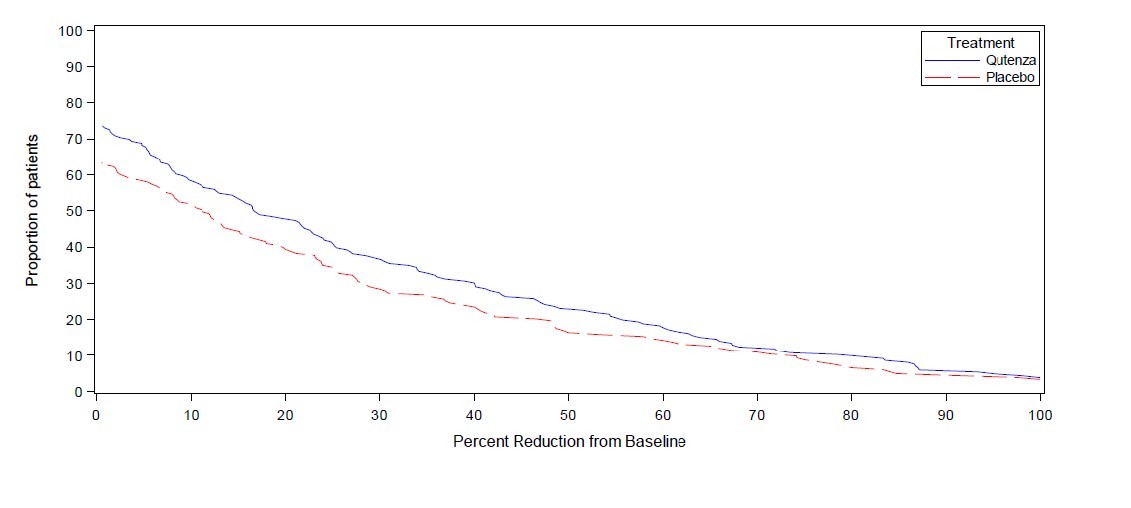
FIGURE 7: Weekly Proportion of Patients Achieving ≥30% Pain Intensity Reduction*
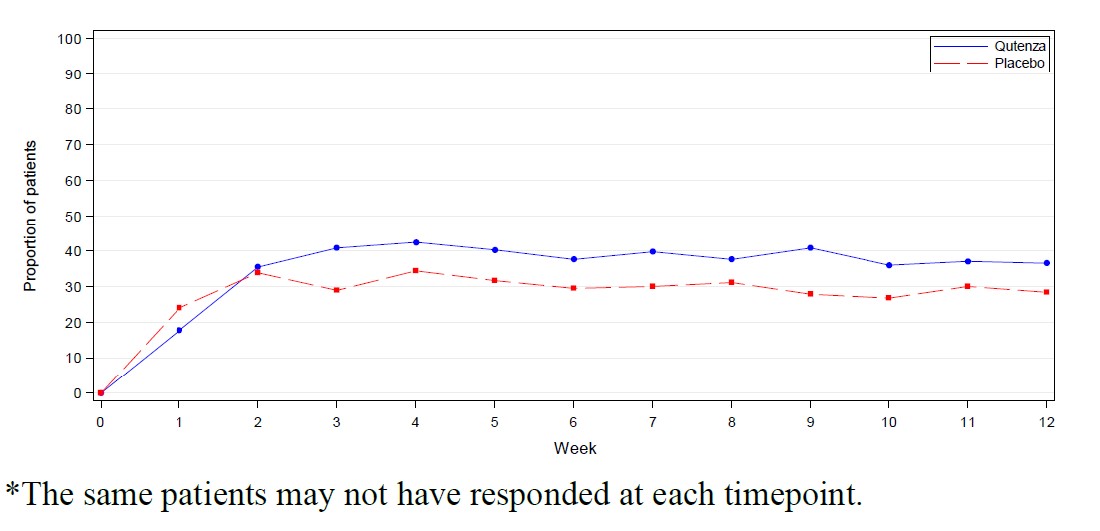
-
16 HOW SUPPLIED/STORAGE AND HANDLING
16.1 How Supplied
QUTENZA (capsaicin) 8% topical system is a single-use topical system stored in a sealed pouch (NDC 72512-920-00).
QUTENZA is 14 cm x 20 cm (280 cm 2) and consists of an adhesive side containing the active substance and an outer surface backing layer. The adhesive side is covered with a removable, clear, unprinted, diagonally cut, release liner. The outer surface of the backing layer is imprinted with “capsaicin 8%”.
Cleansing Gel is provided in a 50 g tube.
QUTENZA is available in the following presentations:
Carton of one topical system and one 50 g tube of Cleansing Gel (NDC 72512-928-01).
Carton of two topical system and one 50 g tube of Cleansing Gel (NDC 72512-929-01).
Carton of four topical systems and three 50 g tube of Cleansing Gel (NDC 72512-930-01).
16.2 Storage
Store carton between 20°C to 25°C (68°F to 77°F). Excursions between 15°C and 30°C (59°F and 86°F) are allowed.
Keep QUTENZA in the sealed pouch until immediately before use.
16.3 Handling and Disposal
Unintended exposure to capsaicin can cause severe irritation of eyes, skin, respiratory tract, and mucous membranes. Wear nitrile (not latex) gloves while administering QUTENZA. Use of a face mask and protective glasses is advisable. Immediately after use, dispose of used and unused QUTENZA, QUTENZA clippings, associated packaging, Cleansing Gel, and all other potentially contaminated treatment supplies in accordance with local biomedical waste procedures [see Dosage and Administration ( 2), Warnings and Precautions ( 5.1)] .
-
17 PATIENT COUNSELING INFORMATION
- Inform patients that accidental exposure to capsaicin from touching QUTENZA or items exposed to capsaicin can cause severe irritation of eyes, mucous membranes, respiratory tract, and skin.
- Instruct patients not to touch their eyes and other unintended target area and that if irritation of eyes or airways occurs, or if any of the side effects become severe, to notify their doctor immediately.
- Inform patients that the treated area may be sensitive to heat (e.g., hot showers/bath, direct sunlight, vigorous exercise) for a few days following treatment.
- Inform patients that they may be given medication to treat acute pain during and after the QUTENZA application procedure.
- Inform patients that as a result of treatment-related increases in pain, small transient increases in blood pressure may occur during and shortly after QUTENZA treatment and that blood pressure will be monitored during the treatment procedure. Instruct patients to inform the physician if they have experienced any recent cardiovascular events.
- SPL UNCLASSIFIED SECTION
-
PRINCIPAL DISPLAY PANEL - Carton Label (1 Topical System)
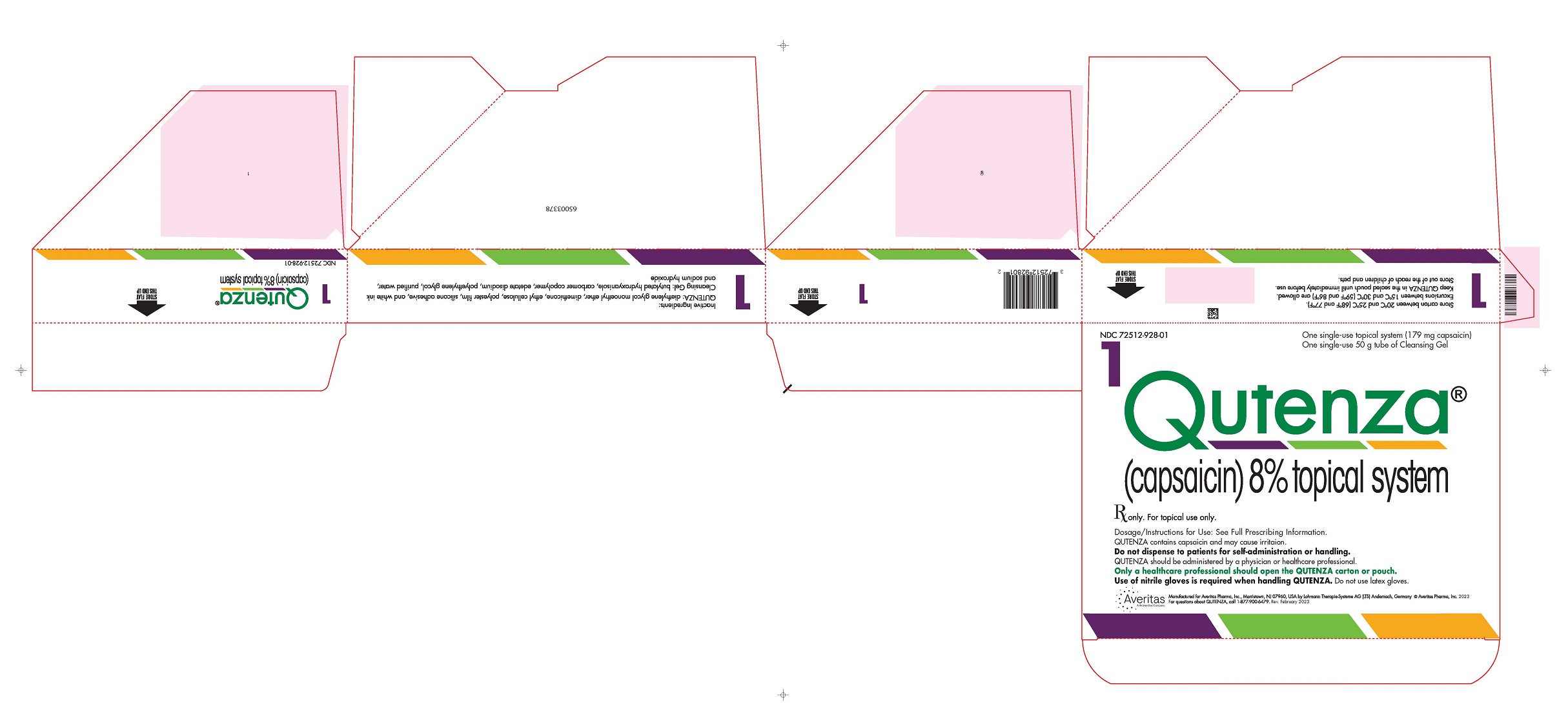
NDC 72512-928-01
1
One single-use topical system (179 mg capsaicin)
One single-use 50 g tube of Cleansing GelQutenza ®
(capsaicin) 8% topical systemRx only. For topical use only.
Dosage/Instructions for Use: See Full Prescribing Information.
QUTENZA contains capsaicin and may cause irritation.
Do not dispense to patients for self-administration or handling.
QUTENZA should be administered by a physician or healthcare professional.
Only a healthcare professional should open the QUTENZA carton or pouch.
Use of nitrile gloves is required when handling QUTENZA. Do not use latex gloves.
Averitas A Grunenthal Company
Manufactured for Averitas Pharma, Inc, Morristown, NJ 07960, USA by Lohmann Therapie-Systeme AG (LTS) Andernach, Germany © Averitas Pharma, Inc. 2023
For questions about QUTENZA call 1-877-900-6479 Rev. February 2023Store carton between 20°C and 25°C (68°F and 77°F).
Excursions between 15°C and 30°C (59°F and 86°F) are allowed.
Keep QUTENZA in the sealed pouch until immediately before use.
Store out of the reach of children and pets.Inactive Ingredients:
QUTENZA: diethylene glycol monoethyl ether, dimethicone, ethyl cellulose, polyester film, silicone adhesive, and white inkCleansing Gel: butylated hydroxyanisole, carbomer copolymer, edetate disodium, polyethylene glycol, purified water, and sodium hydroxide
-
PRINCIPAL DISPLAY PANEL - Carton Label (2 Topical Systems)
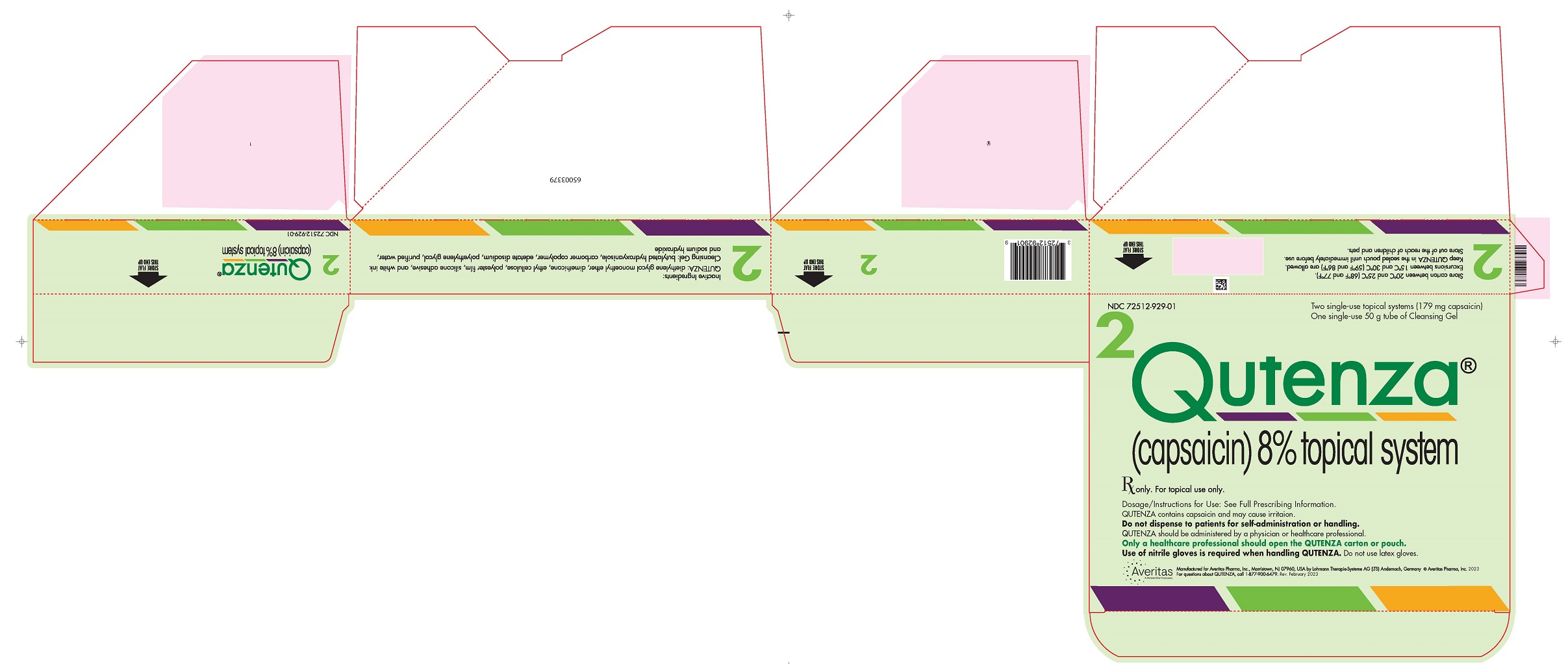
NDC 72512-929-01
2
Two single-use topical systems (179 mg capsaicin)
One single-use 50 g tube of Cleansing GelQutenza ®
(capsaicin) 8% topical systemRx only. For topical use only.
Dosage/Instructions for Use: See Full Prescribing Information.
QUTENZA contains capsaicin and may cause irritation.
Do not dispense to patients for self-administration or handling.
QUTENZA should be administered by a physician or healthcare professional.
Only a healthcare professional should open the QUTENZA carton or pouch.
Use of nitrile gloves is required when handling QUTENZA. Do not use latex gloves.
Averitas A Grunenthal Company
Manufactured for Averitas Pharma, Inc, Morristown, NJ 07960, USA by Lohmann Therapie-Systeme AG (LTS) Andernach, Germany © Averitas Pharma, Inc. 2023
For questions about QUTENZA call 1-877-900-6479 Rev. February 2023Store carton between 20°C and 25°C (68°F and 77°F).
Excursions between 15°C and 30°C (59°F and 86°F) are allowed.
Keep QUTENZA in the sealed pouch until immediately before use.
Store out of the reach of children and pets.Inactive Ingredients:
QUTENZA: diethylene glycol monoethyl ether, dimethicone, ethyl cellulose, polyester film, silicone adhesive, and white inkCleansing Gel: butylated hydroxyanisole, carbomer copolymer, edetate disodium, polyethylene glycol, purified water, and sodium hydroxide
-
PRINCIPAL DISPLAY PANEL - Carton Label (4 Topical Systems)

NDC 72512-930-01
4
Four-use topical systems (179 mg capsaicin)
Three single-use 50 g tube of Cleansing Gel
Qutenza ®
(capsaicin) 8% topical systemRx only. For topical use only.
Dosage/Instructions for Use: See Full Prescribing Information.
QUTENZA contains capsaicin and may cause irritation.
Do not dispense to patients for self-administration or handling.
QUTENZA should be administered by a physician or healthcare professional.
Only a healthcare professional should open the QUTENZA carton or pouch.
Use of nitrile gloves is required when handling QUTENZA. Do not use latex gloves.
Averitas A Grunenthal Company
Manufactured for Averitas Pharma, Inc, Morristown, NJ 07960, USA by Lohmann Therapie-Systeme AG (LTS) Andernach, Germany © Averitas Pharma, Inc. 2023
For questions about QUTENZA call 1-877-900-6479 Rev. February 2023Store carton between 20°C and 25°C (68°F and 77°F).
Excursions between 15°C and 30°C (59°F and 86°F) are allowed.
Keep QUTENZA in the sealed pouch until immediately before use.
Store out of the reach of children and pets.Inactive Ingredients:
QUTENZA: diethylene glycol monoethyl ether, dimethicone, ethyl cellulose, polyester film, silicone adhesive, and white inkCleansing Gel: butylated hydroxyanisole, carbomer copolymer, edetate disodium, polyethylene glycol, purified water, and sodium hydroxide
-
INGREDIENTS AND APPEARANCE
QUTENZA
capsaicin kitProduct Information Product Type HUMAN PRESCRIPTION DRUG Item Code (Source) NDC:72512-928 Packaging # Item Code Package Description Marketing Start Date Marketing End Date 1 NDC:72512-928-01 1 in 1 CARTON; Type 0: Not a Combination Product 10/30/2018 Quantity of Parts Part # Package Quantity Total Product Quantity Part 1 1 PATCH 179 mg Part 2 1 TUBE 50 g Part 1 of 2 QUTENZA
capsaicin patchProduct Information Item Code (Source) NDC:72512-920 Route of Administration CUTANEOUS Active Ingredient/Active Moiety Ingredient Name Basis of Strength Strength CAPSAICIN (UNII: S07O44R1ZM) (CAPSAICIN - UNII:S07O44R1ZM) CAPSAICIN 179 mg in 179 mg Inactive Ingredients Ingredient Name Strength DIETHYLENE GLYCOL MONOETHYL ETHER (UNII: A1A1I8X02B) DIMETHICONE (UNII: 92RU3N3Y1O) ETHYLCELLULOSE, UNSPECIFIED (UNII: 7Z8S9VYZ4B) Packaging # Item Code Package Description Marketing Start Date Marketing End Date 1 NDC:72512-920-00 1 in 1 CARTON 1 1 in 1 POUCH 1 179 mg in 1 PATCH; Type 0: Not a Combination Product Marketing Information Marketing Category Application Number or Monograph Citation Marketing Start Date Marketing End Date NDA NDA022395 10/30/2018 Part 2 of 2 CLEANSING
cleansing (cold creams, cleansing lotions, liquids, and pads)Product Information Route of Administration TOPICAL Other Ingredients Ingredient Kind Ingredient Name Quantity INGR BUTYLATED HYDROXYANISOLE (UNII: REK4960K2U) INGR EDETATE DISODIUM (UNII: 7FLD91C86K) INGR POLYETHYLENE GLYCOL, UNSPECIFIED (UNII: 3WJQ0SDW1A) INGR WATER (UNII: 059QF0KO0R) INGR SODIUM HYDROXIDE (UNII: 55X04QC32I) Packaging # Item Code Package Description Marketing Start Date Marketing End Date 1 50 g in 1 TUBE; Type 0: Not a Combination Product Marketing Information Marketing Category Application Number or Monograph Citation Marketing Start Date Marketing End Date Cosmetic 10/30/2018 Marketing Information Marketing Category Application Number or Monograph Citation Marketing Start Date Marketing End Date NDA NDA022395 10/30/2018 QUTENZA
capsaicin kitProduct Information Product Type HUMAN PRESCRIPTION DRUG Item Code (Source) NDC:72512-929 Packaging # Item Code Package Description Marketing Start Date Marketing End Date 1 NDC:72512-929-01 1 in 1 CARTON; Type 0: Not a Combination Product 10/30/2018 Quantity of Parts Part # Package Quantity Total Product Quantity Part 1 2 PATCH 358 mg Part 2 1 TUBE 50 g Part 1 of 2 QUTENZA
capsaicin patchProduct Information Item Code (Source) NDC:72512-920 Route of Administration CUTANEOUS Active Ingredient/Active Moiety Ingredient Name Basis of Strength Strength CAPSAICIN (UNII: S07O44R1ZM) (CAPSAICIN - UNII:S07O44R1ZM) CAPSAICIN 179 mg in 179 mg Inactive Ingredients Ingredient Name Strength DIETHYLENE GLYCOL MONOETHYL ETHER (UNII: A1A1I8X02B) DIMETHICONE (UNII: 92RU3N3Y1O) ETHYLCELLULOSE, UNSPECIFIED (UNII: 7Z8S9VYZ4B) Packaging # Item Code Package Description Marketing Start Date Marketing End Date 1 NDC:72512-920-01 2 in 1 CARTON 1 1 in 1 POUCH 1 179 mg in 1 PATCH; Type 0: Not a Combination Product Marketing Information Marketing Category Application Number or Monograph Citation Marketing Start Date Marketing End Date NDA NDA022395 10/30/2018 Part 2 of 2 CLEANSING
cleansing (cold creams, cleansing lotions, liquids, and pads)Product Information Route of Administration TOPICAL Other Ingredients Ingredient Kind Ingredient Name Quantity INGR BUTYLATED HYDROXYANISOLE (UNII: REK4960K2U) INGR EDETATE DISODIUM (UNII: 7FLD91C86K) INGR POLYETHYLENE GLYCOL, UNSPECIFIED (UNII: 3WJQ0SDW1A) INGR WATER (UNII: 059QF0KO0R) INGR SODIUM HYDROXIDE (UNII: 55X04QC32I) Packaging # Item Code Package Description Marketing Start Date Marketing End Date 1 50 g in 1 TUBE; Type 0: Not a Combination Product Marketing Information Marketing Category Application Number or Monograph Citation Marketing Start Date Marketing End Date Cosmetic 10/30/2018 Marketing Information Marketing Category Application Number or Monograph Citation Marketing Start Date Marketing End Date NDA NDA022395 10/30/2018 QUTENZA
capsaicin kitProduct Information Product Type HUMAN PRESCRIPTION DRUG Item Code (Source) NDC:72512-930 Packaging # Item Code Package Description Marketing Start Date Marketing End Date 1 NDC:72512-930-01 1 in 1 CARTON; Type 0: Not a Combination Product 03/25/2021 Quantity of Parts Part # Package Quantity Total Product Quantity Part 1 4 PATCH 716 mg Part 2 1 TUBE 50 g Part 1 of 2 QUTENZA
capsaicin patchProduct Information Item Code (Source) NDC:72512-920 Route of Administration CUTANEOUS Active Ingredient/Active Moiety Ingredient Name Basis of Strength Strength CAPSAICIN (UNII: S07O44R1ZM) (CAPSAICIN - UNII:S07O44R1ZM) CAPSAICIN 179 mg in 179 mg Inactive Ingredients Ingredient Name Strength DIETHYLENE GLYCOL MONOETHYL ETHER (UNII: A1A1I8X02B) DIMETHICONE (UNII: 92RU3N3Y1O) ETHYLCELLULOSE, UNSPECIFIED (UNII: 7Z8S9VYZ4B) Packaging # Item Code Package Description Marketing Start Date Marketing End Date 1 NDC:72512-920-02 4 in 1 CARTON 1 1 in 1 POUCH 1 179 mg in 1 PATCH; Type 0: Not a Combination Product Marketing Information Marketing Category Application Number or Monograph Citation Marketing Start Date Marketing End Date NDA NDA022395 03/25/2021 Part 2 of 2 CLEANSING
cleansing (cold creams, cleansing lotions, liquids, and pads) gelProduct Information Route of Administration TOPICAL Other Ingredients Ingredient Kind Ingredient Name Quantity INGR BUTYLATED HYDROXYANISOLE (UNII: REK4960K2U) INGR EDETATE DISODIUM (UNII: 7FLD91C86K) INGR POLYETHYLENE GLYCOL, UNSPECIFIED (UNII: 3WJQ0SDW1A) INGR WATER (UNII: 059QF0KO0R) INGR SODIUM HYDROXIDE (UNII: 55X04QC32I) Packaging # Item Code Package Description Marketing Start Date Marketing End Date 1 3 in 1 CARTON 1 50 g in 1 TUBE; Type 0: Not a Combination Product Marketing Information Marketing Category Application Number or Monograph Citation Marketing Start Date Marketing End Date Cosmetic 10/30/2018 Marketing Information Marketing Category Application Number or Monograph Citation Marketing Start Date Marketing End Date NDA NDA022395 03/25/2021 Labeler - Averitas Pharma Inc (081313982) Establishment Name Address ID/FEI Business Operations Sharp Corporation 002346625 label(72512-928, 72512-920, 72512-929, 72512-930) , pack(72512-928, 72512-929, 72512-920, 72512-930) Establishment Name Address ID/FEI Business Operations Sharp Corporation 143696495 label(72512-928, 72512-929, 72512-920, 72512-930) , pack(72512-928, 72512-929, 72512-920, 72512-930) Establishment Name Address ID/FEI Business Operations Contract Pharmaceuticals Limited Canada 202733655 analysis(72512-928, 72512-929, 72512-930) Establishment Name Address ID/FEI Business Operations Piramal Healthcare (Canada) Limited 244133364 analysis(72512-920) Establishment Name Address ID/FEI Business Operations SGS Institut Fresenius GmbH 317219699 analysis(72512-928, 72512-929, 72512-930) Establishment Name Address ID/FEI Business Operations LTS Lohmann Therapie-Systeme AG 342693590 analysis(72512-920) Establishment Name Address ID/FEI Business Operations Formosa Laboratories, Inc. 657846858 manufacture(72512-928, 72512-920, 72512-929, 72512-930) Establishment Name Address ID/FEI Business Operations SGS North America, Inc. 808308303 analysis(72512-920) Establishment Name Address ID/FEI Business Operations Contract Pharmaceuticals Limited Canada 248761249 manufacture(72512-928, 72512-929, 72512-930)


